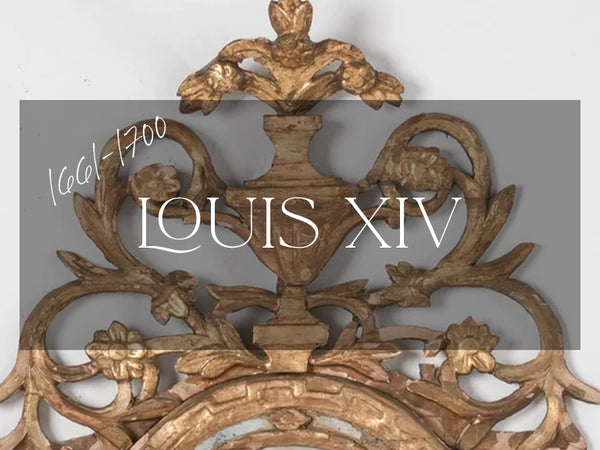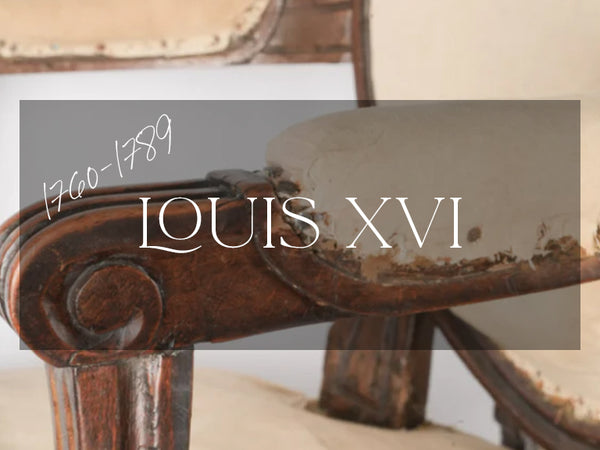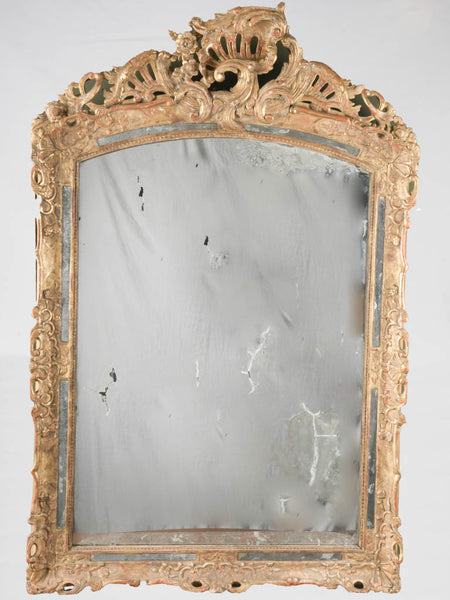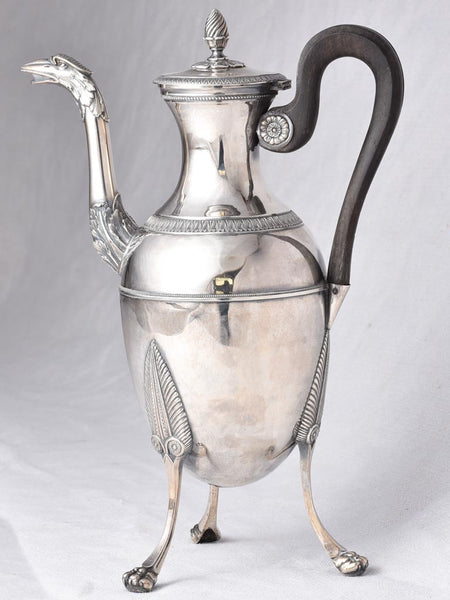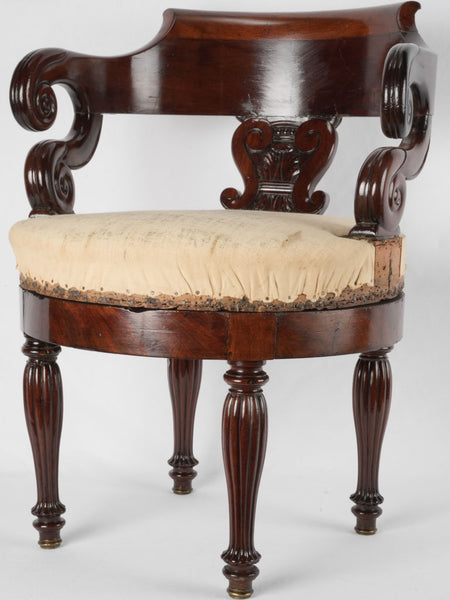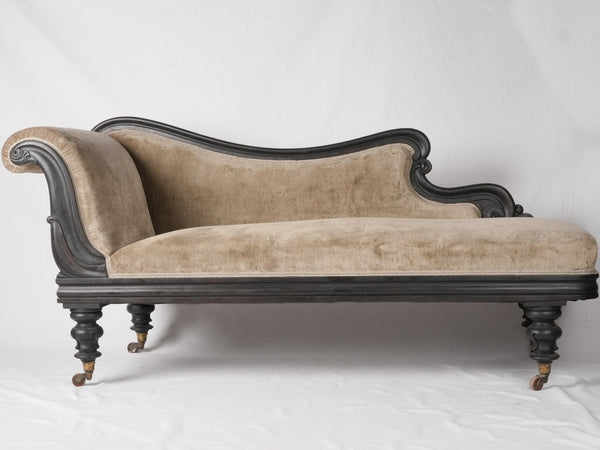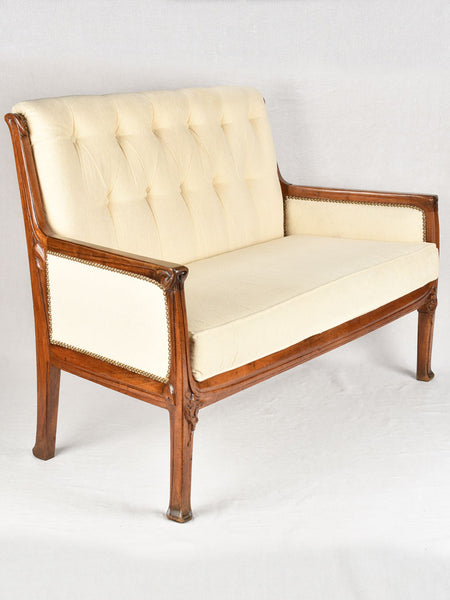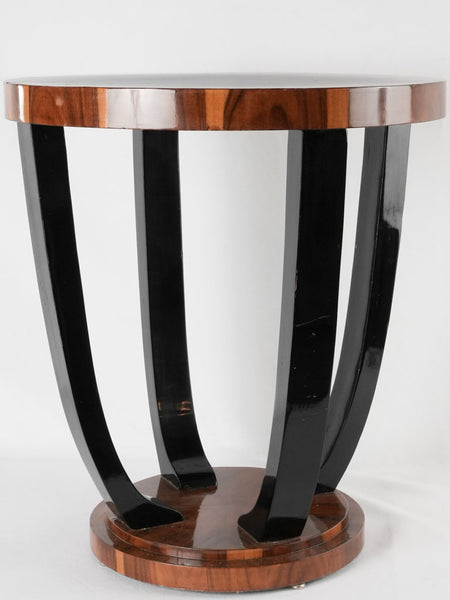The Chez Pluie French Furniture Styles Encyclopedia
Welcome to the "French Furniture Styles Encyclopedia," a comprehensive resource that delves into the rich and diverse history of furniture design in France, spanning from the understated elegance of Louis XIII to the chic and avant-garde Art Deco era. This digital repository is a treasure trove of information, offering in-depth insights into the various periods and trends that have shaped French furniture design. From the robust simplicity of Louis XIII to the neoclassical finesse of Louis XVI, and the innovative and glamorous designs of Art Deco, this encyclopedia is your gateway to understanding the evolution of French furniture from the seventeenth century to early twentieth century. Join us on a journey through time and design, exploring the beauty and heritage of French furniture that has influenced interior design around the world. We invite you to explore, learn, and gain a newfound appreciation for the craftsmanship and aesthetics that have made French furniture styles a timeless and enduring legacy.

Seventeenth century
Louis XIII 1589-1661
Louis XIII furniture, originating in the early 17th century during the reign of King Louis XIII of France, represents a significant shift in French furniture design. This style marks a departure from the ornate excesses of the preceding Renaissance era, embracing a more practical and restrained approach.
Characterized by its robust and functional nature, Louis XIII furniture primarily utilized oak and other native hardwoods, adorned with simple yet elegant carvings and decorative details. The straight lines and unembellished surfaces of pieces like armoires, chests, and tables epitomize the practicality and durability demanded by the times.
Geometric motifs, such as diamond shapes and quatrefoils, were common design elements, while iron hardware often served both as decoration and functional components.
Louis XIV 1661-1700
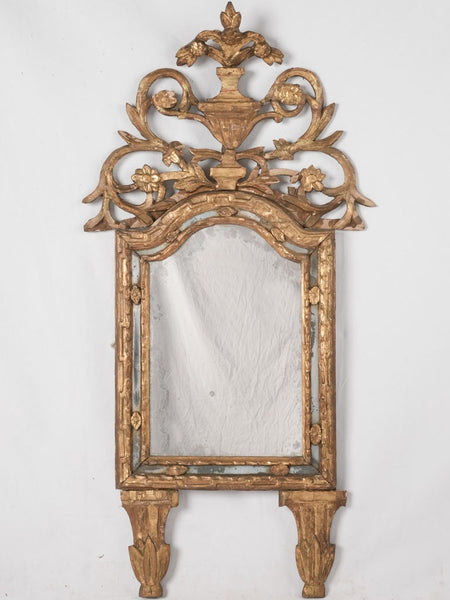
Louis XIV furniture, emblematic of the opulent era of the Sun King in 17th-century France, represents the epitome of grandeur and artistic extravagance. This period, marked by the reign of King Louis XIV, profoundly influenced furniture design and interior aesthetics.
Louis XIV furniture is characterized by its lavishness, featuring rich materials such as walnut, ebony, and marquetry inlays. Ornate carvings and gilded details adorned the furniture, exuding regal luxury. Pieces like commodes, armoires, and salon tables showcased intricate motifs like acanthus leaves, shells, and elaborate scrolls.
The influence of Louis XIV's court at the Palace of Versailles is evident in the furniture's ostentation. Massive proportions, striking symmetry, and a preference for heavy, dark woods define the style. Gilding, velvet upholstery, and intricate marquetry work were common features, creating a sense of unparalleled elegance and status.
Louis XIV furniture is an enduring symbol of French Baroque extravagance and remains a source of inspiration for those seeking to infuse their interiors with timeless and resplendent beauty.
Eighteenth century
Régence 1700-1730
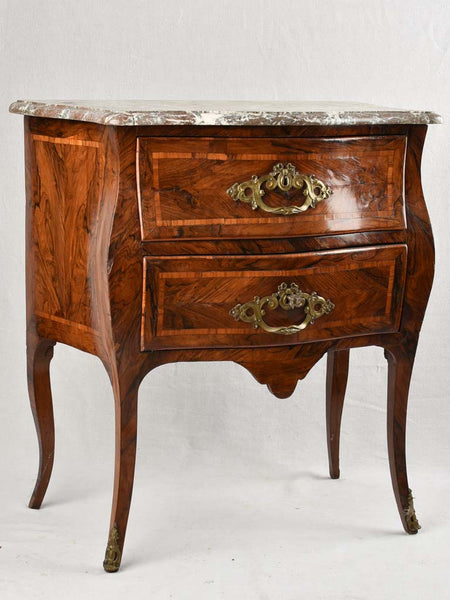
Antoine Criaerd Regency commode - rosewood inlay
Régence furniture, originating in France during the early 18th century, reflects a transitional period between the grandeur of Louis XIV and the opulence of Louis XV styles. This era, under the Regency of Philippe d'Orleans lasted a brief eight years (1715-23) but the influence on French culture lasted much longer. It was a state of mind; turning more towards comfort and intimacy and away from grand scale pieces. Furniture became less bulky - smaller and more numerous, designed to be used in intimate spaces such as music rooms, studies and boudoirs rather than large rooms or ceremonial bed chambers.
Régence furniture embodies a sense of lightness and grace. It often features curves and asymmetrical shapes, a notable departure from the rigid symmetry of Louis XIV furniture. The use of exotic woods like rosewood, amaranth, and marquetry became popular during this period adding decorative patterns to surfaces. Gilt bronze mounts and decorative elements were also common, imparting a sense of elegance and refinement.
Louis XV 1730-1760
The Louis XV furniture style, flourishing in the mid-18th century, embodies the epitome of Rococo elegance, characterized by its graceful, curvaceous lines and ornate detailing. This period, under the reign of King Louis XV of France, was significantly influenced by two powerful and style-forward women of the time: Madame de Pompadour and Madame du Barry.
Madame de Pompadour, the mistress of King Louis XV, was a significant tastemaker and patron of the arts. She played a pivotal role in promoting the Rococo aesthetic in France. Her fondness for pastel colors, feminine motifs, and delicate curves had a profound impact on interior design during the Louis XV era. Furniture from this period reflected her refined and whimsical taste, featuring asymmetrical, sinuous lines, floral carvings, and soft, pastel-colored upholstery.
Madame du Barry, another of Louis XV's mistresses, continued this trend. Her preference for luxurious materials, such as gilt bronze and intricate marquetry, added further opulence to Louis XV furniture.
The Louis XV style is celebrated for its sensuous and graceful designs, marked by cabriole legs, serpentine shapes, and intricately carved motifs like shells, acanthus leaves, and floral garlands. Upholstery in silks and velvets, often featuring floral patterns, was prominent.
This period represents a harmonious blend of the Rococo exuberance championed by these influential women and a desire for comfort and artistry in furniture design, resulting in a style that is both luxurious and inviting. Louis XV furniture continues to be admired for its timeless beauty and the artistic freedom it represents in interior design.
Louis XVI 1760-1789

Pair of Louis XVI cabriolet armchairs
The Louis XVI style, prevalent in the late 18th century, epitomizes a significant shift in French design, marked by a return to neoclassical elegance and intellectual enlightenment. This period was profoundly influenced by key figures such as Jean-Jacques Rousseau, King Louis XVI, and Queen Marie Antoinette.
Jean-Jacques Rousseau, a philosopher of the Enlightenment, played a pivotal role in shaping the intellectual climate of the era. His ideas emphasized simplicity, order, and reason, which strongly influenced the neoclassical tendencies seen in Louis XVI furniture. The style reflects the Enlightenment's ideals of symmetry, freshness and ease.
King Louis XVI and Queen Marie Antoinette were patrons of the arts who promoted the neoclassical style. Their tastes for classicism, often inspired by the archaeological discoveries of Pompeii and Herculaneum, permeated the design of the time. Louis XVI furniture became characterized by straight lines, geometric shapes, and a subdued color palette.
This elegant style embraced light woods, such as mahogany, and delicate inlays, gilded accents, and understated ornamentation. Upholstery featured elegant fabrics, and motifs drew from classical antiquity.
Louis XVI furniture, influenced by these Enlightenment ideals and royal patronage, represents a harmonious blend of classical forms with modern sensibilities. It is celebrated for its refined elegance and remains an enduring symbol of timeless beauty in the world of interior design.
Directoire 1789 - 1804
Walnut and straw child's armchair
The Directoire furniture period, spanning from 1795 to 1799, was a brief yet pivotal transitional phase in French design, heralding the Empire style. It marked the shift from the opulent and ornate Louis XVI style to the more restrained and austere Empire period. This transition was closely intertwined with the turbulent political changes that occurred in France, including the transition from the absolute monarchy of Louis XVI to the revolutionary fervor of the French Revolution, and later to the rise of Napoleon Bonaparte and the establishment of the French Empire.
During the Directoire period, which took its name from the French Directory government, furniture design underwent a significant transformation. As the Revolution progressed, there was a shift away from the lavish styles of the monarchy, and a preference for simpler, more functional forms emerged. Directoire furniture is characterized by clean lines, geometric shapes, and a departure from excessive ornamentation.
The historical context of the period influenced this change. The French Revolution had seen the overthrow of the monarchy and the rise of republican ideals. Furniture design aligned with the new political climate, emphasizing functionality and straightforward elegance. The use of dark woods like mahogany and fruitwood, combined with bronze hardware and classical motifs, created a restrained, yet still refined, aesthetic.
The Directoire furniture style served as a bridge between the past and the future, ultimately leading to the more imposing and imperial designs of the Napoleonic Empire period.
Nineteenth century
Empire 1804-1815
Silver and ebony Poincon coffee pot
Empire style French furniture, born during the Napoleonic era, encapsulates the grandeur, ego, and genius of Napoleon Bonaparte. This unique design movement drew inspiration from ancient art's most monumental elements, reflecting the political and cultural context of the time.
In the late 18th century, revolutionary principles of 1789 inspired a new vision of France. Napoleon emerged as a dominant force, leveraging his power and influence to reshape the nation. The Empire style furniture mirrored this era's spirit, seducing people with martial grandeur and a taste for imperial splendor.
The motifs adorning Empire furniture are emblematic of this era's values and symbols of power. The bee, a reference to the ancient symbol of the Merovingian dynasty, represented industriousness. The eagle, symbolizing Napoleon's military might, graced many pieces. The cornucopia symbolized abundance, while the rinceau, sphinx, and lyres, brought from ancient Egyptian and Greek art, contributed to the monumental aesthetics of the style.
Empire style French furniture stands as a testament to an era defined by Napoleon's vision, embracing the monumental elements of the past to create a lasting legacy of opulence and power in the world of design.
Restoration 1815-1830
Mahogany swivel desk chair - Restoration period
The Restoration style emerged against the backdrop of the political aftermath of the Napoleonic era, including Napoleon's final defeat at Waterloo in 1815. France had been financially drained by the Napoleonic adventures and was in dire need of recovery. The Bourbon monarchy was restored, initially under Louis XVIII (formerly the Comte de Provence) and later Charles X (the Comte d'Artois), the last of the Bourbon kings.
The Restoration style was a reaction against the gaudy spectacle and monumental pomp of the Empire, embracing elegance, refinement, and subtlety. It aimed to revive the classical traditions obscured by the grandeur of Napoleon. The style also contributed to the completion of monuments like the Arc de Triomphe, started under Napoleon's rule.
Restoration furniture was marked by decorative motifs such as tulip molding, palmettes, gothic rosettes, and floral wreaths. It favored light woods over dark ones, using veneer and inlay techniques to achieve delicate and harmonious designs. The neoclassical tradition, which valued simplicity and clean lines, reached new heights of refinement during this era.
Louis Philippe 1830-1848

The Louis Philippe style was characterized by a more restrained and comfortable aesthetic, in harmony with the tastes of a burgeoning middle class. At the beginning of this period, the Romantic era was at its pinnacle, impacting the design and ornamentation of furniture.
One significant source of inspiration for Louis Philippe furniture was the Gothic period. Ornamentation often drew upon elements from this earlier era, which, combined with Islamic and Chinese motifs, resulted in a unique fusion of cultural influences.
Innovations in production techniques and the use of machinery played a pivotal role in making this furniture accessible to a broader audience. This shift aligned with the lifestyles of the less wealthy members of society, who inhabited more modest apartments. Consequently, the smaller and more practical pieces of furniture from the Louis Philippe era are well-suited to contemporary apartment living.
Balzac's (1799-1850) influence on the Louis Philippe furniture style can be seen in the furniture's reflection of the changing social and economic dynamics, as well as in the incorporation of realistic, everyday-life elements that he portrayed in his novels. His writings provided a valuable source of inspiration for furniture designers and played a role in shaping the aesthetics and themes of this particular period of furniture design. Additionally, artists like Claude-Aimé Chenavard (1798-1838), influenced the ornamentation of Louis Philippe furniture, adding further layers of artistic richness.
The furniture was decorated with elements such as mother of pearl and brass embellishments, marble tops, ribbed edges, knob legs, paw feet, palmettes, frog's thigh capitals, straight legs, and gadrooned bulbs under tables. These details contributed to the unique and ornate aesthetics of this furniture style.
Napoleon III or Second Empire 1848-1870
The Napoleon III furniture period, also known as the Second Empire style, represents a captivating amalgamation of artistic influences and historic shifts. This era, which encompassed the mid-19th century during the reign of Napoleon III in France, borrowed and imitated elements from three prominent styles: Renaissance, Louis XV (Rococo), and Louis XVI.
This period unfolded against the backdrop of the industrial era and the extensive urban transformation of Paris by Baron Haussmann. The city's redevelopment gave rise to the opulent grandeur that came to define Second Empire architecture and design.
In the art world, Impressionist painter Claude Monet's early works were considered scandalous, reflecting the era's avant-garde spirit and rejection of conventional norms.
Second Empire furniture was characterized by a fusion of old-world craftsmanship and new production techniques, including machine-assisted manufacturing. Materials like blackened timber, gilt bronze, cast iron, and paper mache played prominent roles in the creation of these pieces.
Ornamentation featured gilt bronze fittings, copper, pewter, ivory, and mother of pearl inlays. Elements like arabesques for imitation Boulle marquetry, bouquets of flowers reminiscent of Louis XVI-empress pieces, birds, pagodas, and intricate fretwork adorned the furniture, giving it a rich and ornate character that epitomized the grandeur of the era.
Twentieth century
Art Nouveau 1900s
The Art Nouveau furniture style, flourishing in the late 19th and early 20th centuries, emerged in a prosperous France, marked by innovation and cultural dynamism. This period coincided with the advent of the first automobiles, and artistic expression was driven by a sense of novelty and progress. Key influences on the Art Nouveau movement include Frédéric Auguste Bartholdi's (1834-1904) Statue of Liberty, the innovative designs of Antoni Gaudí (1852-1926), and the pioneering work of figures like Hector Guimard (1867-1942), Émile Gallé (1846-1904), Louis Majorelle (1859-1926), and Eugène Gaillard (1862-1933).
Art Nouveau is characterized by a departure from the rigid constraints of previous styles. It sought to embrace nature's organic forms and often featured sinuous, asymmetrical motifs. This style borrowed elements from both the Gothic and Louis XV design, resulting in a fusion of intricate ornamentation.
Furniture and architecture was infused with elegant, flowing lines, often inspired by the curves and shapes of plants and natural forms. The ornamentation on Art Nouveau furniture included motifs like vines, flowers, and insect wings.
Arguably the most recognizable Art Nouveau designs are the iconic entrances to the Paris metro by Hector Guimard - their intricate wrought ironwork and organic forms, are emblematic of the Art Nouveau style.
Art Deco 1925
Art Deco side table - veneer and black lacquer
Art Deco, a dynamic design movement of the early 20th century, embraced a wide array of ornamental resources, employing them with both imagination and refinement. Marquetry, inlay work, bronze fittings, wrought iron, lacquer, and painting were employed in inventive ways, reflecting the style's opulence and artistic depth.
Art Deco represented a stark contrast to the Bauhaus style, which gravitated toward functional minimalism and would go on to influence contemporary design. Art Deco, however, still retained some elements of the Belle Époque era with its appreciation for curvaceous and sinuous lines. Nevertheless, it was not impervious to the impact of cubist and abstract painters and functionalist architects, such as Le Corbusier, whose clean and geometric aesthetic left a mark on the movement.
Leather and textiles were often coupled with exotic woods like mahogany, ebony, Macassar, palisander, and lacquered wood, imbuing Art Deco furniture with a luxurious and sumptuous feel.
The 1925 Exposition des arts décoratifs (Expo 25) in Paris was a pivotal event for the Art Deco movement, further solidifying its significance in the design world. This exhibition showcased a plethora of Art Deco designs, highlighting the movement's rich diversity and influence.
Ornamentation in Art Deco was abundant, featuring motifs such as fruit, vegetation, and flowers, which were used to adorn various pieces of furniture and architectural elements. The style's exuberance, along with its ability to merge diverse ornamental techniques and materials, makes it a testament to the creative spirit of the early 20th century.


